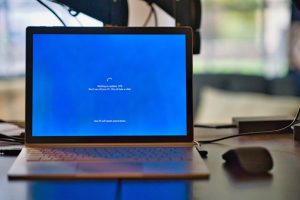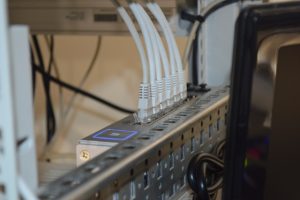I remember my first computer hunt like it was yesterday—standing in a buzzing electronics store, eyes glazing over rows of sleek laptops and hulking desktops, thinking, “Just pick one that looks cool and fits my $500, right?” Wrong. I came home with a clunky laptop that choked on basic Word docs and died within a year. Lesson learned: Buying a computer isn’t a quick grab-and-go—it’s a quest. With endless models, specs that sound like sci-fi jargon, and prices from “bargain bin” to “second mortgage,” it’s easy to feel swamped. But whether you’re a student cramming for finals, a gamer chasing epic frame rates, a pro juggling deadlines, or just someone who wants to email without drama, the right choice hinges on knowing what you need and matching it to the machine that delivers.
I’ve since cracked the code through trial, error, and a few wins—upgrading from that dud to a rig that’s lasted me years. Here’s my step-by-step guide to cut through the noise and pick a computer that’s your perfect fit—no tech degree required.
1. Know Your Why: What’s This Thing Gotta Do?
Before you even peek at models, hit pause and ask: What’s this computer for? I learned this the hard way when I bought that first lemon for “everything”—turns out “everything” meant nothing well. Nail your purpose, and the rest falls into place:
- Basic Stuff: Browsing, emails, spreadsheets? A budget-friendly laptop or desktop with modest guts works fine—I got by with one for years just paying bills and doomscrolling.
- Student or Pro Life: Docs, research, Zoom classes, light edits? A mid-range laptop with portability and decent battery life’s your sweet spot—my college years would’ve been smoother with one.
- Gaming or Video Editing: High-octane graphics? You need a beast—powerful CPU, hefty RAM, and a dedicated graphics card. My gamer pal swears by his rig for silky Elden Ring runs.
- Dev or Engineering: Coding, 3D modeling, AI crunching? Go big—lots of RAM, SSD speed, multi-core muscle. I’ve seen coders weep with joy over fast compile times.
Once I pinned my needs (writing, some editing, no gaming), I stopped drooling over overkill specs and zeroed in on what mattered. Define your mission—it’s your North Star.
2. Laptop or Desktop: Road Warrior or Home Base?
Next fork in the road: laptop or desktop? My first flop was a laptop—portable, sure, but weak. Now, I weigh it like this:
- Laptops: My lifeline when I’m hopping cafes or crashing at a friend’s. Light, space-saving, but often less punch and tricky to upgrade. My current one’s a road champ.
- Desktops: Power for pennies—my brother’s editing beast laughs at my laptop’s specs. Easy to tweak—more RAM? Swap it in. Downside? It’s stuck at home.
I’ve flirted with both—a high-end laptop once split the difference when I needed power and mobility. Or there’s 2-in-1s, flipping from laptop to tablet. Where’s your life at? That’s your pick.
3. Decode the Specs: The Guts That Count
Specs used to make my head spin—CPU, RAM, what?! Now, I see them as the engine under the hood. Here’s what I’ve learned to focus on:
- Processor (CPU) – The Brain: Speed’s king. An Intel Core i3 or AMD Ryzen 3 handles my emails and Netflix fine. i5/Ryzen 5? My multitasking pal for work and play. i7/Ryzen 7 or up? My editor friend’s lifeline for rendering 4K vids. For gaming or heavy lifting, I’d chase higher clock speeds and more cores—smooth as butter.
- RAM (Memory) – The Juggler: More RAM, more tabs. 4GB? Barely cuts it in 2025—I’d lag opening Chrome. 8GB’s my baseline now—writing, Zoom, no sweat. 16GB+? Gamers and pros, that’s your jam. I wish I’d gone 16GB upfront—future me would’ve thanked me.
- Storage – Speed vs. Space: SSDs are rocket fuel—my current laptop boots in seconds, apps fly. HDDs? Cheaper, roomier, but sluggish—my old one crawled. Hybrid’s my dream: SSD for zip, HDD for hoarding. I’d pick SSD every time now; speed trumps all.
- Graphics Card (GPU) – The Visual Muscle: Casual stuff? Integrated graphics (built into the CPU) are fine—I stream with no fuss. Gaming or editing? A dedicated NVIDIA RTX or AMD Radeon’s non-negotiable—my gamer pal’s Cyberpunk glows thanks to his. I skip it; words don’t need flash.
- Battery Life (Laptops): On the move? I need juice. Basic rigs hit 6-8 hours—my last one lasted a full coffee shop stint. High-end? 4-6 hours if I’m lucky—power eats battery. User reviews spill the real tea; don’t trust the box.
I match specs to my grind now—no overspending on gamer GPUs when I’m just typing.
4. Pick Your OS: The Soul of the Machine
Operating system’s the vibe—each has its tribe:
- Windows: My default—runs everything, games like a champ, business-ready. It’s home for most.
- macOS: My designer friend’s muse—silky for editing, tight with her iPhone. Pricey, but pretty.
- Linux: My coder cousin’s playground—free, flexible, but steep to learn. I’m too lazy for it.
I stick with Windows—broad support, no fuss. If you’re lost, it or macOS are safest bets.
5. Set Your Budget: Cash Meets Compromise
Money’s the reality check—I’ve drooled over $2,000 rigs but settled smarter:
- $300-$600: Budget basics—my mom’s email machine hums along here.
- $600-$1200: Mid-tier sweet spot—my workhorse lives here, juggling writing and edits.
- $1200-$2500: High-end heroes—gamers and pros, this is your turf.
I’ve learned not to splurge on bells I won’t ring—but skimping too hard backfired with that first dud. Spend what fits, not what flexes.
6. Bonus Perks: Nice-to-Haves
Some extras spice it up—I’ve weighed these:
- Touchscreen: My artist pal swears by it for sketching—drains juice, though.
- 2-in-1: Laptop one minute, tablet the next—I’ve eyed these for couch browsing.
- Backlit Keys: Saved me typing in the dark—small win, big vibe.
- High Refresh Rate: 120Hz screens? Gamers’ silk—my words don’t care.
I skip most—speed beats gimmicks for me—but they’re gold if they fit your flow.
7. Future-Proof It: Will It Last?
My first laptop was a dead-end—no upgrades, toast in two years. Now, I peek ahead:
- Desktops: Swap RAM, drives, GPUs—my brother’s rig’s five years strong.
- Laptops: Tougher, but some let you bump RAM or storage. My current one’s 16GB and SSD—set for half a decade.
I’d pick upgradable or beefy now—16GB, SSD, solid CPU—to dodge buyer’s remorse.
8. Do Your Homework: Reviews and Reliability
Before I swipe my card, I dig:
- Reviews: Real users spill—my last pick aced battery tests despite the hype.
- Warranties: Dell swapped my fried drive once—peace of mind matters.
- Brands: Apple’s polish, Lenovo’s grit, Dell’s dependability—I trust ‘em over no-names.
I dodged a lemon last time by cross-checking—worth the hour.
Final Thoughts: Your Machine, Your Match
Buying a computer’s no small potatoes—it’s your work buddy, gaming wingman, or daily driver. My first flop taught me: Match it to you. Need to roam? Laptop. Crave power? Desktop. I prioritize guts—CPU, RAM, SSD—over flash; they’re the difference between “it works” and “it sings.” I’ve landed on a mid-range laptop that hauls my workload without breaking the bank—years later, no regrets.
Follow this path, and you’ll snag a rig that fits your life, not just your shelf. What’s your must-have—speed, portability, price? Drop it below—I’m curious what drives your pick!





